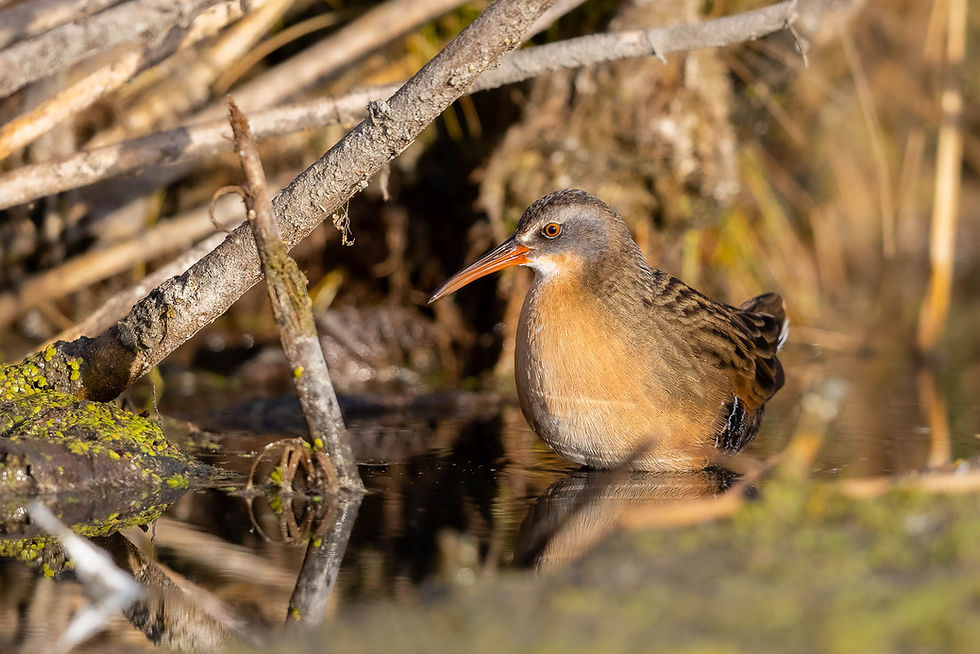Uganda: Mabamba Bay
- Mike Timmons
- Aug 31, 2019
- 3 min read
August, 2019
Sometimes, I say stupid things. A recent example was the statement that the "success" of the trip to Uganda, in my mind, was whether or not I got great shots of the Shoebill. It's silly to put that much emphasis on something as fickle as seeing or not seeing a bird; let alone getting good photos of the bird. Uganda has so much to offer in the way of wildlife, scenery, and, well, other birds.
The morning of our trip rolled around, and it's raining. Sure, it's officially the dry season, but no one bothered to inform the weather. We left our hotel and got in line for the ferry out of Entebbe. We were there early to ensure we made the first ferry of the morning. So had a lot of other people. In the end, it worked out, and we scored a spot on the ferry; it only holds 9 cars. In spite of Carmen reading lots of stories online about the dangers of the ferries in Uganda, we made it safely across.
We headed to Mabamba Bay and arrived shortly after the rain stopped. The morning would consist of riding in a large, heavy, wooden canoe with a guide and a driver. The place is a large papyrus swamp surrounding an open body of water in one area. There are small, winding channels through a lot of the area.
Not long after we started out, the call came in (the guides communicate via cell phone) that a Shoebill had been found. Within 10 minutes we were pulling up to the area. The bird was sitting close to the edge of the water in some vegetation. We pulled up, cut the motor, and slowly drifted up a safe distance away. The bird hardly paid us any attention. I took a lot of photos. The Shoebill is a large prehistoric-looking member of the stork family. Standing over 4 foot tall, you could fit your head in its bill.
After a while, more boats showed up, and the bird decided it had too much attention. I realized it was getting ready to fly, but I was not quite quick enough to dial the zoom back. I got one decent flight shot off before it was past us. In the end, my favorite photo turned out to be one that I wasn't quite sure of, at first.

Afterwards, we spent a while touring around to look for other specialties of the swamp. Honestly, this is why you don't say crazy things about how the success of the trip relies on a single bird. I cannot imagine not having scored a decent shot of a Papyrus Gonolek.

And there were many other species I wanted photos of, too!
Pied and Malachite Kingfishers, African Jacana, Squacco Herons, Long-tailed Cormorant, Hammerkop, and even a Black Crake. We saw more than I could photograph, but that's the way it always goes. I was happy to capture what I could. Birding by boat is one of my favorite ways to bird.
We wrapped the trip by hunting down one last specialty of the swamp. The Lesser Jacana is a tiny bird. We slowly prowled the papyrus channels; looking for open areas. As we rounded a corner, our guide grew excited and quickly pointed us to a small bird scuttling about the water's surface as it worked it's way away from us. It was distant, but I managed to get a few shots off before it moved off into cover.

We'd hit all of our targets for the swamp, and it was time to head back. Word was there was a line of people waiting for the next available boat, too. We headed back to shore and did a little birding around the parking area. There were a few other specialties of the area to be seen from there.
I managed shots of Weyne's Weaver, Village Weaver, Red-chested Sunbird, and White chinned Prinia. The area was full of Angola Swallows, a Mosque Swallow, Swamp Flycatcher, Bronze Manakin, and African Pied Wagtail, too. We did eventually track down the Yellow-breasted Apalis that our guide was looking for. The rain returned shortly afterwards, and we started the drive back to Entebbe; enduring another safe ferry passage along the way.
Thanks for reading,
Mike





















































Comments